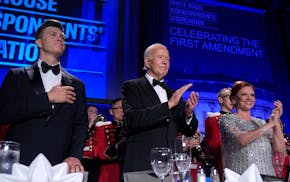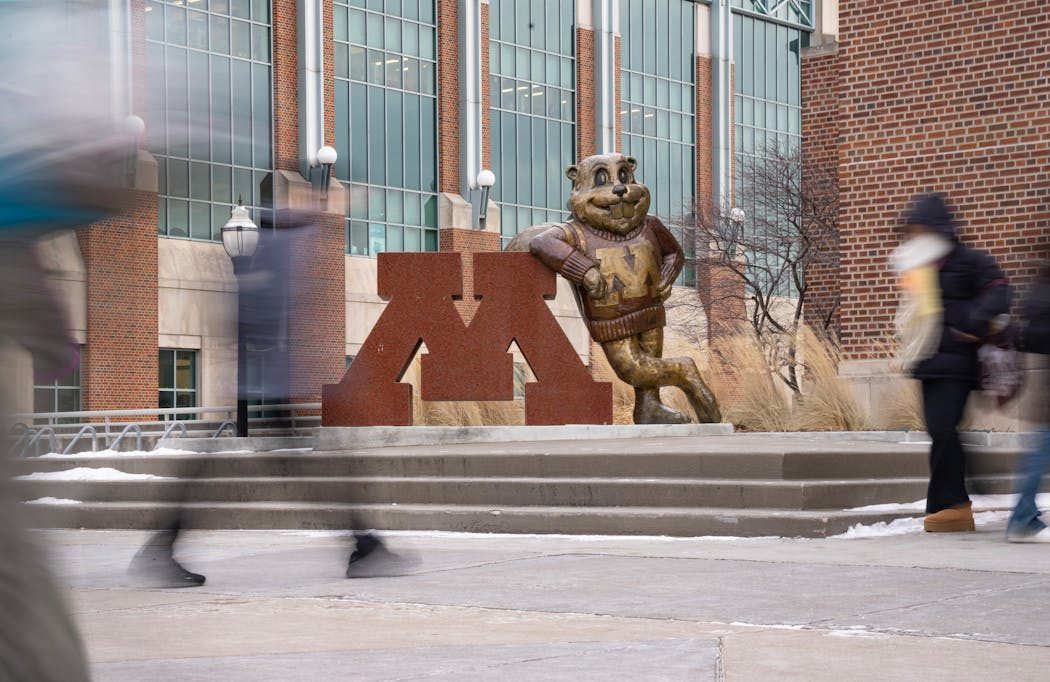Minnesota's public colleges and universities would receive more than $200 million for construction projects under Gov. Tim Walz's new infrastructure proposal — a fraction of what the schools requested.
The University of Minnesota and the Minnesota State system of colleges and universities each asked for roughly $500 million to help repair and upgrade old buildings or complete other projects, arguing in part that their needs had grown after years of incomplete funding.
Leaders at both systems offered thanks after reviewing the governor's proposal, but made clear they'd continue to push for more funding.
"Minnesota State appreciates Governor Walz's bonding recommendation," Chancellor Scott Olson said in a statement. "He is clearly committed to supporting the success of our students and making investments that will strengthen Minnesota's economy."
But Olson added that the system would keep working with government leaders "toward funding our request to position Minnesota State to successfully deliver the talent our state needs."
The money for the state's public colleges and universities is included in a larger $982 million bonding bill proposal that would also fund projects focused on housing, the environment and maintaining state-owned buildings. The governor's proposal represents the starting point in a process that is expected to unfold over several months and involve negotiations with Republican and DFL lawmakers. Leaders from both parties have signaled that they'll want university leaders to explain why they need the money and how they would reverse declining enrollment.
Sen. Karin Housley, R-Stillwater, who leads bonding work for Senate Republicans, noted that universities received funding last year, too, and said, "It's going to take a real, real need by an institution to be coming back again this year."
The governor's proposal would set aside nearly $103 million for the University of Minnesota to repair and upgrade buildings across its five campuses. It calls for giving nearly $82 million to the Minnesota State system for similar efforts and nearly $32 million to help with renovations at St. Paul College, where leaders hope to upgrade classrooms and lab spaces for programs seeing increased interest, such as business, math and computer science.
The governor's office said he arrived at those numbers after trying to balance the needs from various sectors while providing comparable support to the University of Minnesota and Minnesota State system. The office also noted that the governor was trying to stay within the state's debt capacity guidelines, which limit general obligation bonds to $830 million.
The University of Minnesota listed 143 projects to support its request, ranging from roof replacements and heating and air conditioning upgrades to fire sprinkler installation and elevator modernizations.
"It's too soon to know exactly how this level of funding would be applied to our highest priority infrastructure projects," the University of Minnesota said in a statement. "Any funding for these urgent needs is appreciated but funding short of what we have requested will further delay pressing projects and leave a number of our biggest needs unaddressed."
The Minnesota State system asked for $200 million to help maintain buildings at 28 schools, and roughly $341 million for newer construction projects. Spokesperson Doug Anderson said, "We are working on allocation strategies for this proposed funding and other various funding levels."
Unlike other spending proposals, bills that borrow money require support from a supermajority of more than three-fifths in both chambers of the Legislature, meaning the DFL needs Republican votes to pass.
Senate Republicans noted that colleges and universities received $317 million in last year's bonding bill. They're also weighing requests from communities that want money for crumbling roads, improvements to wastewater treatment facilities and other projects.
Housley said college leaders will need to be prepared to explain what the buildings are being used for and why it's worth it to fix a roof or put in a new HVAC system.
When lawmakers visited campuses, Housley said, "We saw a lot of empty buildings, and so I don't know what's their use going to be going forward."
Rep. Gene Pelowski, DFL-Winona, who chairs the House Higher Education Committee, said he has similar questions, particularly as some enrollments have declined.
But he also wonders if specific programs might benefit from funding boosts, saying that a recent tour in Rochester convinced him some facilities being used to train police officers, firefighters and medics could use upgrades.
"I'd say what the governor has here is a good start, and we certainly appreciate what the governor has done," Pelowski said, "but I think there is much more of a need than the governor has included."
Staff writers Rochelle Olson and Briana Bierschbach contributed to this report.
Utah GOP picks Trump-backed mayor as nominee to replace Sen. Mitt Romney, but primary foes await
A Hawaii military family avoids tap water at home. They're among those suing over 2021 jet fuel leak

Chants of 'shame on you' greet guests at White House correspondents' dinner shadowed by war in Gaza



